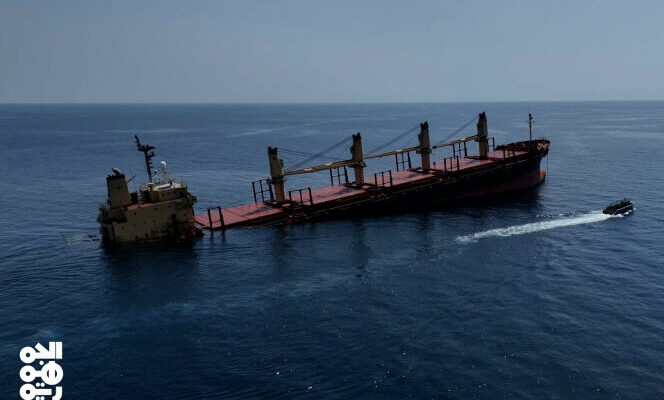Flying the flag of Belize, registered in the United Kingdom and operated by Lebanese, the cargo ship Rubymar sank on Saturday March 2 in the Red Sea off the coast of Yemen, with its cargo of fertilizer after being hit by two missiles from the Houthi rebels on February 19.
According to the United States, the ship presents a risk to the environment of the Black Sea and its coral reefs, and to maritime traffic. “The approximately 21,000 tonnes of fertilizer based [de dérivés] of ammonium that the ship was carrying pose a risk to the environment in the Red Sea »the US Middle East Military Command (Centcom) said in a statement on Sunday.
“By sinking, the vessel also poses a risk of collision below the surface for other vessels transiting the busy shipping lanes of this sea route”added Centcom.
The ship was abandoned after being hit by the missiles while it was, according to the maritime security agency UKMTO, 35 nautical miles (65 kilometers) from the Yemeni port of Mokha (southwest). The attack did not cause any casualties among the crew.
Fall of shipping
Houthi rebels have been carrying out attacks on ships in the Red Sea and the Gulf of Aden since November, saying they are acting in solidarity with Palestinians in Gaza where Israel is waging a war against Hamas in retaliation for the Islamist movement’s unprecedented attack. on October 7. THE Rubymar is also the first ship to be completely destroyed in this conflict.
Faced with these attacks, the United States, Israel’s main ally, set up a multinational force in December, in order to ” protect “ maritime traffic in these strategic waters. Since January, sometimes with the help of the United Kingdom, they have launched numerous strikes against Houthi targets in Yemen, a country facing a war since 2014 pitting the government against rebels supported by Iran.
According to the IMF, maritime container transport through the Red Sea fell by almost 30% year-on-year. Before the conflict, between 12 and 15% of global traffic passed through this axis, according to figures from the European Union.
